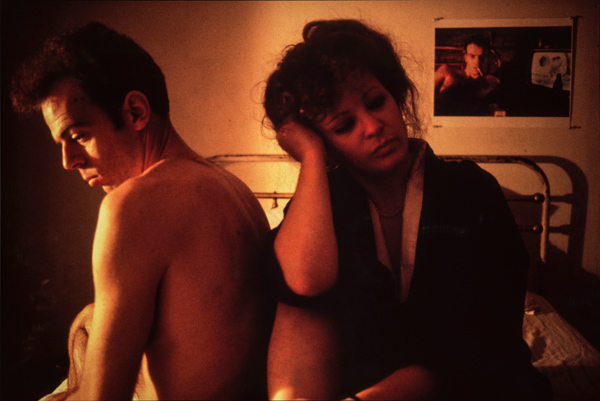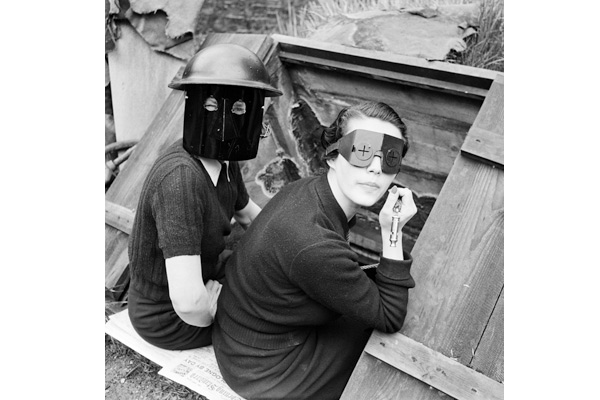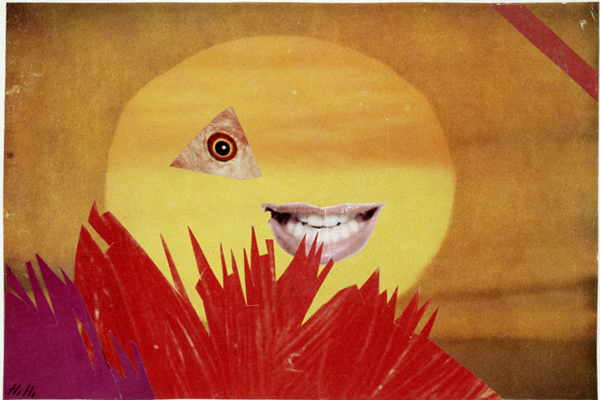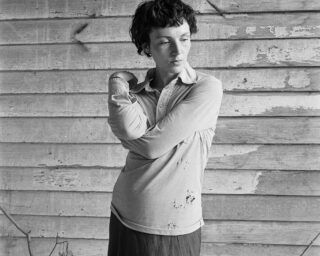Pictures in Motion
Most people have seen a film still or actor’s portrait that has made them look twice and realize the artistry behind movie publicity. Mine was a photograph of silent film star Louise Brooks, her black robe and dark cropped hair dissolved into an inky abyss. The only visible elements in Eugene Robert Richee’s minimal 1927 composition were Brooks’s face, hands, and the string of pearls clasped in them. Her dissected body hovers amid the darkness like a surreal statue. Man Ray, in his many years working in Hollywood, never captured anything this strange.
This startling modernist photograph appears near the end of Still: American Silent Motion Picture Photography, David S. Shields’s survey of photography from cinema’s silent era. To put into perspective how overlooked images from this period have been, consider that in previous histories of Hollywood film photography, Richee’s vision of Brooks would appear at the beginning of the book. John Kobal, the collector and historian who rescued film stills and portraits from being seen as throwaway publicity material, saw little image-making of note before sound, remarking in his 1976 book Hollywood Glamour Portraits that photographs of actors in the 1920s were “not that much different to the sort that might be seen in any small town” and that any extraordinary images were so “because of the subject, rarely because of the photographer.”
In Still, Shields spends 401 pages refuting this, employing a strict editing process to gather a selection of the most exceptional images produced by the large number of little-known photographers working during this time (many of whom were rarely allowed a signature on their work). But what could easily have been a glossy, visual celebration of silent-era film photography is instead a forensic study, the product of years of research and archive-scavenging; Shields began writing the book in 2004. He reaches back, right to the origins of cinema, long before the studios emerged—when actors and starlets-to-be all traveled to independent photography studios—and he traces the emergence of the cinematic photo from the worlds of theatrical publicity and society portraiture. He maps its evolution from adorning the cabinet cards collected by fans to mass-production in newspapers and magazines (from the early 1910s onward), while also illustrating how its importance grew with the rise of feature-length films and the birth of the major studios.
Of course, it is of little surprise that stills and portraits from this period are so arresting. This was when movies were pictures in motion, cinema was known as “photoplay,” and spectacle was the chief export of the dream factory. Photography itself was not sixty years old when the movies were born, and so this is an exploration of how one nascent medium recorded another. Shields charts technological and aesthetic developments, noting how photographers began to refuse the movie camera’s perspective on set, how they welcomed and experimented with artificial light, and how they tried to challenge tired modes of representation (choosing mystery over likeness; depicting not just subjects, but moods). Throughout, Shields interrogates the meaning of glamour, excavates a buried corner of photography’s past, and tells the story of silent cinema—its ambitious directors, stars, opulent designs, and special effects—from an unusual angle.

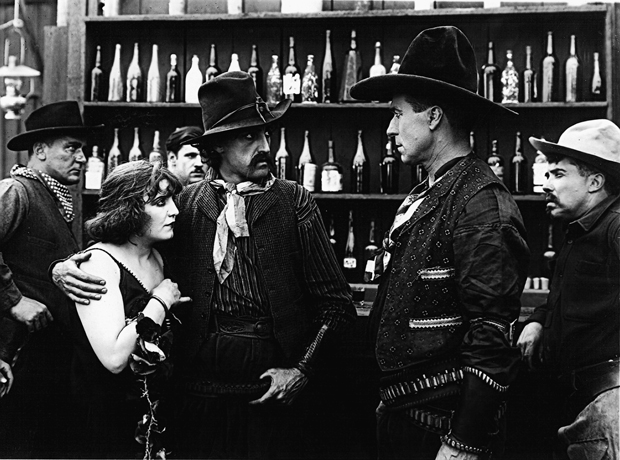
Top: Junius “June” Estep, William S. Hart as Blaze Tracy in Hell’s Hinges, Los Angeles, Kay-Bee Pictures, March 5, 1916. The apocalyptic final fight in which Blaze Tracy personally pummels corrupt Rev. Bob Henley while the tainted village of Hell’s Hinges burns in the fire’s judgment. Bottom: Junius “June” Estep, William S. Hart, as the title character in Selfish Yates, Los Angeles, Artcraft Pictures, May 12, 1918.
The detailed profiles of so many photographers are the book’s triumph: key early innovators such as Arnold Genthe, whose ghostly, soft-focus portraits did away with the elaborate staging his contemporaries depended upon; revelations like M. I. Boris, who, under the influence of Symbolism, etched into his photographs; and unsung image masters such as Junius “June” Estep, who captured the epic, inhospitable Western landscape like no one else. Shields delves into their lives, illuminating their varied backgrounds (medical photography, conservation, even priesthood), how they talked their way onto movie sets, and, in some cases, their sad fates. For example, Jose Maria Mora, who became a recluse, was discovered on his death surrounded by images of the beauties he made famous. Shields even notes how his bathtub was filled with yellowed theatrical programs.
Also discussed are lesser-known images from celebrated Golden Age photographers, those who learned their craft in the silent era, such as Frank Powolny, whose elaborate forested nightmares for Dante’s Inferno provide a different breed of visual fantasy than his later iconic shots of Betty Grable and Marilyn Monroe. Collaborations between photographers and directors—in particular Edward S. Curtis, who funded his ethnographic experiments by recreating medieval Persia for Ferdinand P. Earle from Earle’s seven hundred sets and three hundred painted backgrounds—provide another fascinating chapter in Shields’s history.
It was, of course, nearly always a male gaze behind the lens, but Shields does highlight the importance of two female figures: Lillian Gish and Alla Nazimova, performers who recognized the importance of photography and had the clout to champion adventurous still men such as Hendrik Sartov, James Abbe, and Arthur Rice. Renowned art photographers of the time are also mentioned, among them Edward Weston, but an in-depth contextualization of their work with that of the still men is the book’s only lacking feature (but is perhaps the subject of another tome entirely).

James Abbe, Mary Pickford as Amanda Afflick in Suds, Hollywood, Mary Pickford Company, United Artists, January 7, 1920. Dressed as a fantasy princess in the daydream of a kitchen drudge. Gown by Adele Crinley.
As Shields reminds us, over 80 percent of silent cinema is missing, presumed destroyed. In some instances these stills and portraits are the only remaining records of a film. In others, the photographs point to what a movie could have been had the grandiose follies of a director not dominated. Just as there were landmark productions (two hundred stills courtesy of Karl Strauss for Quo Vadis in 1912) there were also early mistakes (the toilet plungers which adorned horse-riders’ heads but weren’t noticed in the flurry of D. W. Griffith’s The Birth of a Nation, but which were plain to see when frozen in cinematographer William Blitzer’s stills). Shields highlights the vast difference between these blurred, amateur snaps with those meticulous, epic scenes photographer James E. Woodbury labored over for Griffith’s next feature, Intolerance.
Today, would a big studio’s publicity department ever allow Twilight star Kristen Stewart to look as deranged as her 1915 vamp counterpart Theda Bara did when shot by Jack Freulich for Sin, her hands gripping tufts of hair above her head? Not just a reappraisal of a collection of daring, innovative artisans, Shields’s book makes all too apparent how bland and safe contemporary movie stills and portraits really are.











